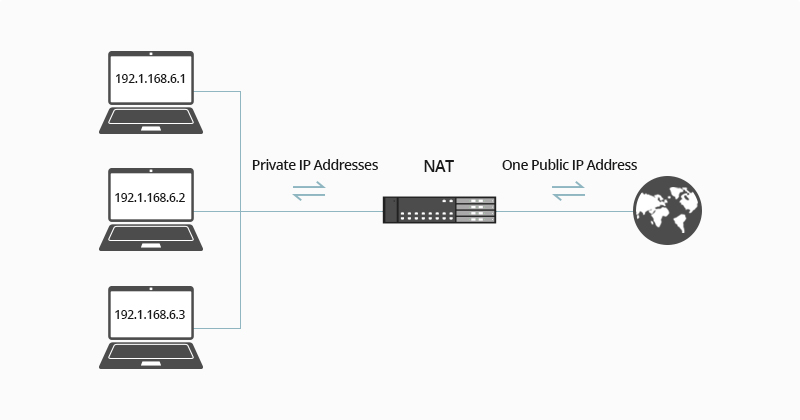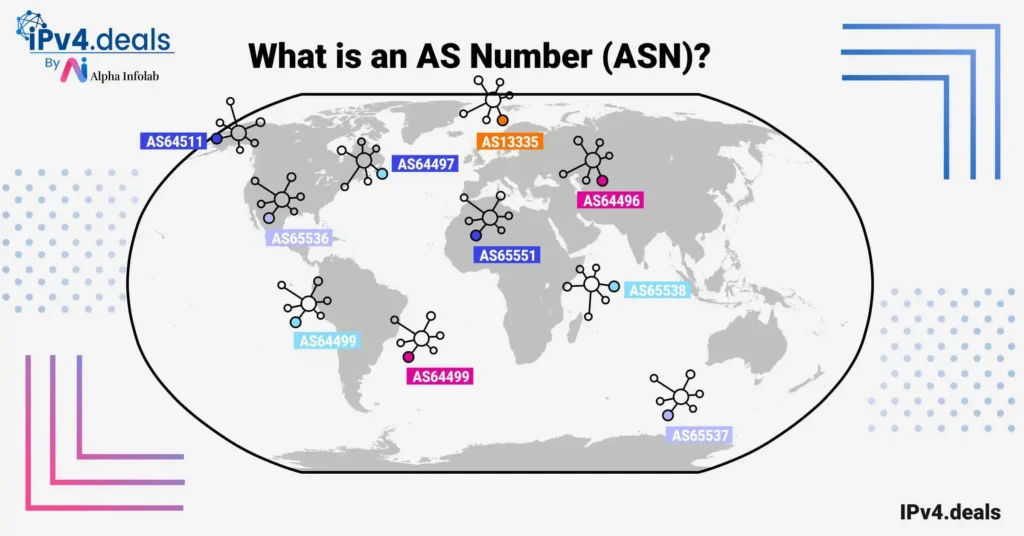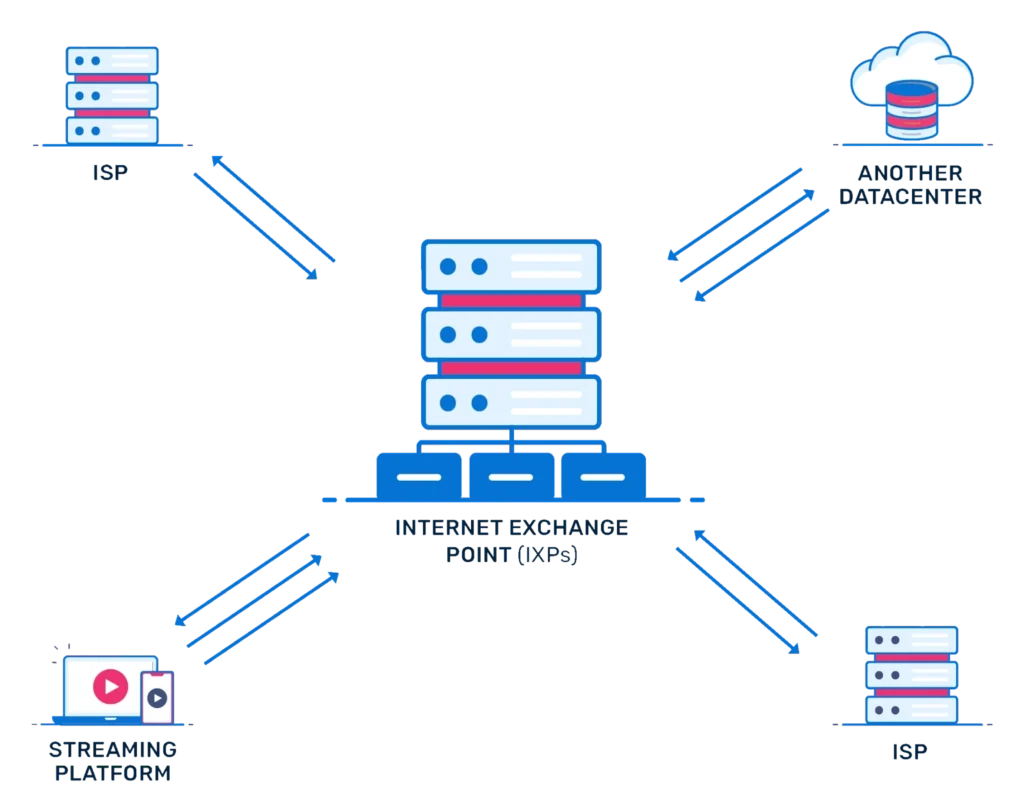Table of Contents
In the vast digital landscape of the internet, ensuring efficient and organized communication between devices is paramount. Just as cities are divided into neighborhoods and streets to streamline mail delivery and transportation, networks use a system to organize and manage traffic. This system, known as subnetting, plays a crucial role in optimizing network performance and resource allocation. In this article, we’ll delve into the world of IPv4 subnetting, exploring its significance, mechanics, and practical applications in modern networking.
Basics of IPv4 addressing
An IPv4 address is a 32-bit numerical label used to identify devices on a network. It’s written in a dotted-decimal format, comprising four octets separated by dots. Each octet can range from 0 to 255, resulting in addresses like “203.0.113.42.”
The primary function of an IPv4 address is to ensure unique identification of devices, facilitating communication within and between networks. As networks expanded in size and complexity, the need to efficiently manage and allocate these addresses became evident. This necessity led to the development of subnetting, a method to further segment and categorize the vast pool of available IPv4 addresses.
What is subnetting?
Subnetting is the practice of dividing an IP network into smaller, more manageable segments called subnets. By doing so, network administrators can better control and allocate IP addresses within these subnets, optimizing network performance and security.
At its essence, subnetting modifies the default boundary between the network portion and the host portion of an IP address. This modification allows for the creation of multiple smaller networks (or subnets) within a larger network. Each subnet operates as its own distinct entity within the broader network, with its own range of IP addresses.
For example, consider a company that has multiple departments, each requiring its own local network. Instead of managing each device individually within a vast network, subnetting allows the company to allocate a unique subnet to each department. This segmentation not only simplifies IP address management but also enhances security by isolating each department’s network traffic.
Why subnet?
Subnetting offers several advantages that make it a vital tool for network administrators and architects. Here are some of the primary benefits:
- Improved Network Performance: By dividing a larger network into smaller subnets, local traffic is confined within its respective subnet. This reduces unnecessary traffic on the main network, leading to faster data transmission and reduced congestion.
- Enhanced Security: Subnets can act as natural barriers, isolating different segments of a network. If a security breach occurs in one subnet, its effects can be contained, preventing it from spreading to the entire network.
- Efficient IP Address Management: Subnetting allows for better allocation of IP addresses. Instead of having a pool of addresses for the entire network, administrators can allocate specific ranges to different subnets based on their needs.
- Scalability: As organizations grow, their networking needs evolve. Subnetting provides the flexibility to expand or modify the network architecture without major overhauls. New subnets can be added as needed, ensuring the network remains organized and manageable.
- Logical Segmentation: Organizations can segment their networks based on departments, functions, or even geographical locations. This logical division makes it easier to manage, monitor, and troubleshoot network issues.
- Optimized Network Traffic: With subnetting, broadcast traffic—messages sent to all devices in a network—is limited to its specific subnet. This reduces unnecessary data flow and minimizes the load on devices that aren’t relevant to the broadcast.
In essence, subnetting is not just a technical necessity but also a strategic approach to optimize, secure, and future-proof network infrastructures.
Understanding subnet masks
A subnet mask is a tool that divides an IP network into subnets. It works in tandem with an IP address to set boundaries for these subnets.
Consider the following example:
- IP Address: 192.168.1.10
- Subnet Mask: 255.255.255.0
The subnet mask 255.255.255.0 translates to 11111111.11111111.11111111.00000000 in binary. The continuous string of ones covers the first three octets, meaning they represent the network portion. The last octet, represented by zeros, is reserved for individual devices. Therefore, with this mask, addresses from 192.168.1.1 to 192.168.1.254 are part of the same subnet.
Let’s delve into another example:
- IP Address: 192.168.2.25
- Subnet Mask: 255.255.255.128
The subnet mask 255.255.255.128 in binary is 11111111.11111111.11111111.10000000. Here, the first 25 bits are reserved for the network, and the remaining 7 bits are for individual devices. This configuration allows for two subnets within the 192.168.2.x range: 192.168.2.1 to 192.168.2.126 and 192.168.2.129 to 192.168.2.254. The address 192.168.2.25 falls into the first subnet.
In essence, the subnet mask’s binary representation helps determine how IP addresses are segmented into subnets, making network management more organized and efficient.
CIDR notation
Classless Inter-Domain Routing (CIDR) is a method introduced to improve IP address allocation and route aggregation. It offers a more flexible and efficient way to represent IP addresses and their associated routing prefix.
CIDR notation combines the IP address and its associated routing prefix in a concise format, often seen as IP_address/Prefix_Length. The Prefix_Length denotes how many bits are used for the network portion of the address.
For instance:
- CIDR Notation: 192.168.1.10/24
In this example, /24 indicates that the first 24 bits (or the first three octets) are used for the network and subnet parts of the address. This is equivalent to the subnet mask 255.255.255.0. A /24 prefix allows for 256 IP addresses in the subnet, though typically 254 are usable (the network and broadcast addresses are reserved).
Another example:
- CIDR Notation: 192.168.2.25/25
Here, /25 means that 25 bits are used for the network portion, leaving 7 bits for host addresses. This CIDR notation is equivalent to the subnet mask 255.255.255.128. A /25 prefix provides 128 IP addresses, with 126 being usable for hosts.
CIDR notation is widely used in modern networking due to its simplicity and efficiency. It allows for more granular control over IP address allocation and makes route aggregation more straightforward, leading to smaller routing tables and improved network performance.
Practical examples of subnetting
Understanding subnetting in theory is one thing, but seeing it in action can provide a clearer picture. Let’s walk through a couple of practical examples to illustrate the process:
Example 1: Creating subnets for different departments
Scenario: A company has been allocated the IP address range 192.168.10.0/24 and wants to create separate subnets for its Sales, Marketing, and HR departments.
Solution:
- Sales Department: Requires 100 IP addresses.
- Closest CIDR notation that supports at least 100 addresses is /25, which provides 128 addresses.
- Subnet: 192.168.10.0/25 (Range: 192.168.10.1 to 192.168.10.126)
- Marketing Department: Requires 50 IP addresses.
- Closest CIDR notation that supports at least 50 addresses is /26, which provides 64 addresses.
- Subnet: 192.168.10.128/26 (Range: 192.168.10.129 to 192.168.10.190)
- HR Department: Requires 30 IP addresses.
- Closest CIDR notation that supports at least 30 addresses is /27, which provides 32 addresses.
- Subnet: 192.168.10.192/27 (Range: 192.168.10.193 to 192.168.10.222)
Example 2: Subnetting for a small business
Scenario: A small business has the IP address 192.168.5.0/24 and wants to create subnets for its main office and two remote branches.
Solution:
- Main Office: Requires 150 IP addresses.
- Closest CIDR notation that supports at least 150 addresses is /24, but since the entire range is /24, we need to go one level deeper to /25 which provides 128 addresses.
- Subnet: 192.168.5.0/25 (Range: 192.168.5.1 to 192.168.5.126)
- Remote Branch 1: Requires 60 IP addresses.
- Closest CIDR notation that supports at least 60 addresses is /26, which provides 64 addresses.
- Subnet: 192.168.5.128/26 (Range: 192.168.5.129 to 192.168.5.190)
- Remote Branch 2: Requires 50 IP addresses.
- Using another /26 subnet for consistency and ease of management.
- Subnet: 192.168.5.192/26 (Range: 192.168.5.193 to 192.168.5.254)
These examples showcase how subnetting can be applied in real-world scenarios to efficiently allocate IP addresses based on specific requirements.
IP subnet table: a quick reference
An IP subnet table serves as a handy reference for network administrators, providing a quick overview of subnet sizes, CIDR notations, and the number of available IP addresses for each subnet. This table is especially useful when planning and designing network architectures.
Here’s a simplified IP subnet table for quick reference:
| CIDR Notation | Subnet Mask | Total IP Addresses | Usable IP Addresses |
| /32 | 255.255.255.255 | 1 | 1 (Typically used for a single host) |
| /31 | 255.255.255.254 | 2 | 2 (Used for point-to-point links) |
| /30 | 255.255.255.252 | 4 | 2 |
| /29 | 255.255.255.248 | 8 | 6 |
| /28 | 255.255.255.240 | 16 | 14 |
| /27 | 255.255.255.224 | 32 | 30 |
| /26 | 255.255.255.192 | 64 | 62 |
| /25 | 255.255.255.128 | 128 | 126 |
| /24 | 255.255.255.0 | 256 | 254 |
(Note: The table above is a partial representation, focusing on smaller subnets for simplicity. In practice, CIDR notation can range from /0 to /32, encompassing a wide variety of subnet sizes.)
The “Total IP Addresses” column indicates the total number of IP addresses within the subnet, while the “Usable IP Addresses” column deducts the network and broadcast addresses, providing the actual number of addresses that can be assigned to devices.
Having a subnet table at your disposal can significantly speed up the process of determining the right subnet size for a given requirement, ensuring efficient IP address utilization.
Challenges and considerations in subnetting
Subnetting, while invaluable, comes with its set of challenges and considerations. Proper planning is essential to ensure that the network remains scalable, efficient, and easy to manage. Here are some key points to keep in mind:
- Future Growth: Always account for potential growth when designing subnets. It’s advisable to leave some room for expansion to avoid the need for significant network reconfigurations later on.
- Complexity: As the number of subnets increases, so does the complexity of managing and routing between them. Proper documentation and consistent naming conventions can help manage this complexity.
- Wastage: Over-subnetting can lead to IP address wastage. If a subnet is allocated more addresses than it requires, those extra addresses can’t be used elsewhere. It’s a balance between ensuring room for growth and efficient utilization.
- Routing: Each subnet is typically associated with a unique route. As the number of subnets grows, the routing table can become more extensive, potentially impacting router performance.
- Security: While subnetting can enhance security by isolating segments of the network, it’s essential to ensure that security policies and configurations are consistently applied across all subnets.
- Inter-subnet Communication: Devices in different subnets don’t communicate directly. They require a router or layer 3 switch to relay messages between subnets. This setup can impact the speed of communication and needs to be factored into network design.
- Variable-Length Subnet Masking (VLSM): VLSM allows for the use of different subnet masks within the same network, offering more flexibility. However, it also introduces additional complexity in terms of planning and management.
- Compatibility with Legacy Systems: Older systems and devices might not support modern subnetting practices or CIDR notation. Ensuring compatibility can sometimes require additional configuration or workarounds.
In essence, while subnetting is a powerful tool for optimizing and organizing IP networks, it requires careful planning and consideration to be implemented effectively.
In Summary
Subnetting is a fundamental concept in the realm of IP networking, offering a structured approach to segmenting and managing IP address spaces. While it might seem daunting initially, understanding its principles and applications can significantly enhance network design, security, and efficiency.
As with many technical endeavors, the key to successful subnetting lies in careful planning, foresight, and a solid grasp of the underlying concepts. Whether you’re setting up a small office network or managing the infrastructure of a large enterprise, subnetting is an invaluable skill that will serve you well in the ever-evolving landscape of networking.
Remember, as networks grow and technology advances, the principles of subnetting remain consistent. It’s a testament to the enduring importance and relevance of this foundational networking practice.
Frequently Asked Questions
What is IPv4 subnetting?
Subnetting is the practice of dividing an IP network into smaller, more manageable segments called subnets. This allows network administrators to better control and allocate IP addresses within these subnets, optimizing network performance and security.
Why is subnetting Important?
Subnetting offers several advantages, including improved network performance, enhanced security, efficient IP address management, scalability, logical segmentation, and optimized network traffic. It helps in reducing unnecessary traffic, enhancing security by isolating different segments of a network, and providing flexibility to expand or modify the network architecture.
What is CIDR notation?
Classless Inter-Domain Routing (CIDR) is a method introduced to improve IP address allocation and route aggregation. It offers a more flexible and efficient way to represent IP addresses and their associated routing prefix. CIDR notation combines the IP address and its associated routing prefix in a concise format, often seen as IP_address/Prefix_Length.





